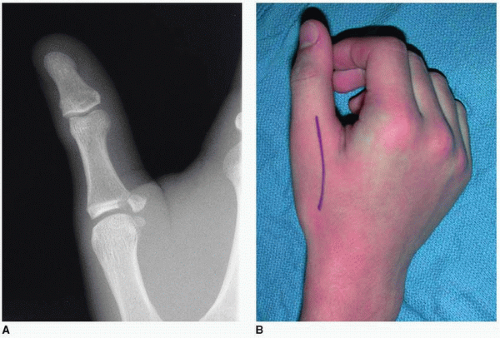
Tenderness over dorsal aspect of DIP joint. On examination distal phalanx is in flexed position with no active extension of DIP joint (“extensor lag”). Mallet Injury Forced flexion of extended finger, with extensor tendon avulsion fracture at insertion site Place in a neutral hand splint (see point 9) and start oral antibiotics for any open fractures.įollow up is with GP for most injuries, but Hand Surgery team if nailbed repair required. Management consists mainly of treating any associated soft tissue or nailbed injury or tip avulsion.

Soft tissue injury is often more obvious Xray required to detect underlying fracture What do they look like on X-Ray? Distal Phalanx Fractures What radiological investigations should be ordered?ĪP and lateral, and oblique Xray of the affected handĬommunication to the radiographer regarding in which finger is injured allows the film to be centred over the area of interest. Subtle fractures may be difficult to detect clinically so the clinician should have a low threshold for arranging Xray in the presence of pain and loss of functionįindings in specific fractures are listed in the table under point 6 below.ĥ. There may be ‘scissoring’ of the fingers if there is a rotational deformity present. Significant angulation or displacement of fingers is sometimes mistaken for dislocation clinically. What do they look like – clinically?įractures of the finger usually present with localised swelling, bruising, tenderness, with or without deformity. Injuries among older children more often result from falls or sporting injuries, and are more often displaced or angulated than in younger children. Injuries among toddlers and younger children are commonly from a crushing mechanism associated with exploring their environment. How common are they and how do they occur?įinger injuries including fractures are a common reason for children to present to an Emergency Department. Specific injury types are listed in the table under point 6. … and by co-existing tendon or nailbed injuries.By anatomical location of which phalanx is affected.By presence and type of growth plate involvement (Salter-Harris classification).

Early appropriate care can save significant later impairment in everyday function. In young children this is most often from crush injuries in the home, whilst older children are more likely to be injured in sports.Ī variety of skeletal or ligamentous injuries can occur, with some subtle variations in the early care required for each.

This Guideline is for fractures of the phalanges of the ulnar four digits (index, middle, ring and little fingers).įractures of the THUMB are covered separately, as are METACARPAL FRACTURES.įinger injuries are a very common reason for children to present to an Emergency Department.


 0 kommentar(er)
0 kommentar(er)
